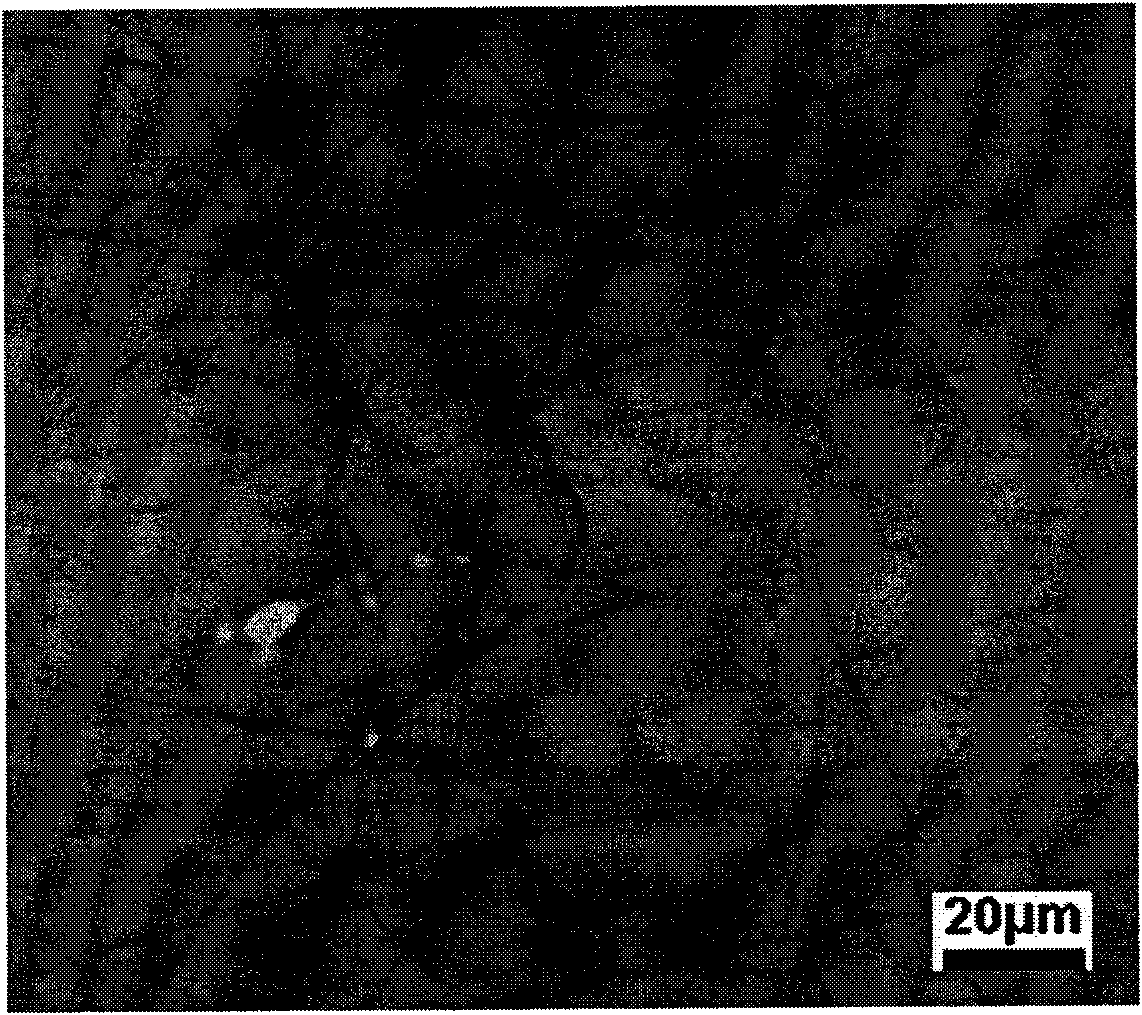Method for preparing immobilized laccase in electrospun fiber membrane
A technology for immobilizing laccase and electrospinning fibers, which is applied in the directions of immobilization on/in organic carriers, fiber processing, textiles and papermaking, etc. problems, to achieve the effects of good stability and reusability, protection of enzyme activity, and high enzyme loading capacity
- Summary
- Abstract
- Description
- Claims
- Application Information
AI Technical Summary
Problems solved by technology
Method used
Image
Examples
preparation example Construction
[0028] The preparation steps of the enzyme-loaded electrospun fiber membrane include:
[0029] 1) Dissolve polylactic acid-caprolactone copolymer (P(LA / CL), 7 / 3) particles with a molecular weight of 100,000 in dichloromethane, add block copolymer surfactant F108, mix evenly and stir Obtain copolymer mixed gel in 2 hours, wherein the consumption of block copolymer F108 is 10% of polylactic acid-caprolactone copolymer (P(LA / CL), 7 / 3) weight;
[0030] 2) Weigh 10 mg of Versicolor versicolor laccase and dissolve it in 1 ml of phosphate buffer solution with a pH value of 3.5, and shake until completely dissolved. In order to observe the distribution of laccase in the electrospun fiber using laser confocal scanning microscope, the concentration of 10 mg / ml of laccase solution;
[0031]3) Add the laccase solution obtained in step 2) into the copolymer mixed gel, and mix on a vortex mixer for 20 minutes until a homogeneous emulsion is formed, wherein the volume ratio of the enzyme ...
Embodiment 1
[0046] 0.6 g of poly(lactic acid-caprolactone) copolymer (P(LA / CL), 7 / 3) was dissolved in 12 g of dichloromethane, then 0.06 g of block copolymer surfactant F108 was added, mixed evenly and stirred for 2 hours A copolymer mixed gel was obtained. Weigh 10 mg of Versicolor versicolor laccase and dissolve it in 1 ml of phosphate buffered saline solution with a pH value of 3.5, and shake until completely dissolved. Add 0.1 ml of the above laccase solution or 10 mg / ml laccase solution labeled with fluorescein isothiocyanate (FITC) into the copolymer mixed gel, and mix on a vortex mixer for 20 minutes until a homogeneous gel is formed. quality lotion. The emulsion is then introduced into a high-voltage electrospinning device to be spun. Adjust the high-voltage power supply voltage to 10 kV and the receiving distance to 14 cm to obtain a stable and continuous jet stream, and collect the fiber product on the receiving plate covered with aluminum foil. During the whole process of sp...
Embodiment 2
[0049] 0.6 g of poly(lactic acid-caprolactone) copolymer (P(LA / CL), 7 / 3) was dissolved in 12 g of dichloromethane, then 0.06 g of block copolymer surfactant F108 was added, mixed evenly and stirred for 2 hours A copolymer mixed gel was obtained. Weigh 10 mg of Versicolor versicolor laccase and dissolve it in 1 ml of phosphate buffered saline solution with a pH value of 3.5, and shake until completely dissolved. Take 0.15 ml of the above-mentioned laccase solution or a 10 mg / ml laccase solution labeled with fluorescein isothiocyanate (FITC) and add it to the copolymer mixed gel, and mix on a vortex mixer for 20 minutes until a homogeneous gel is formed. quality lotion. The emulsion is then introduced into a high-voltage electrospinning device to be spun. Adjust the voltage of the high-voltage power supply to 11 kV, and the receiving distance is 14 cm to obtain a stable and continuous jet stream, and collect the fiber product on the receiving plate covered with aluminum foil. ...
PUM
| Property | Measurement | Unit |
|---|---|---|
| Molecular weight | aaaaa | aaaaa |
Abstract
Description
Claims
Application Information
 Login to View More
Login to View More - R&D
- Intellectual Property
- Life Sciences
- Materials
- Tech Scout
- Unparalleled Data Quality
- Higher Quality Content
- 60% Fewer Hallucinations
Browse by: Latest US Patents, China's latest patents, Technical Efficacy Thesaurus, Application Domain, Technology Topic, Popular Technical Reports.
© 2025 PatSnap. All rights reserved.Legal|Privacy policy|Modern Slavery Act Transparency Statement|Sitemap|About US| Contact US: help@patsnap.com


